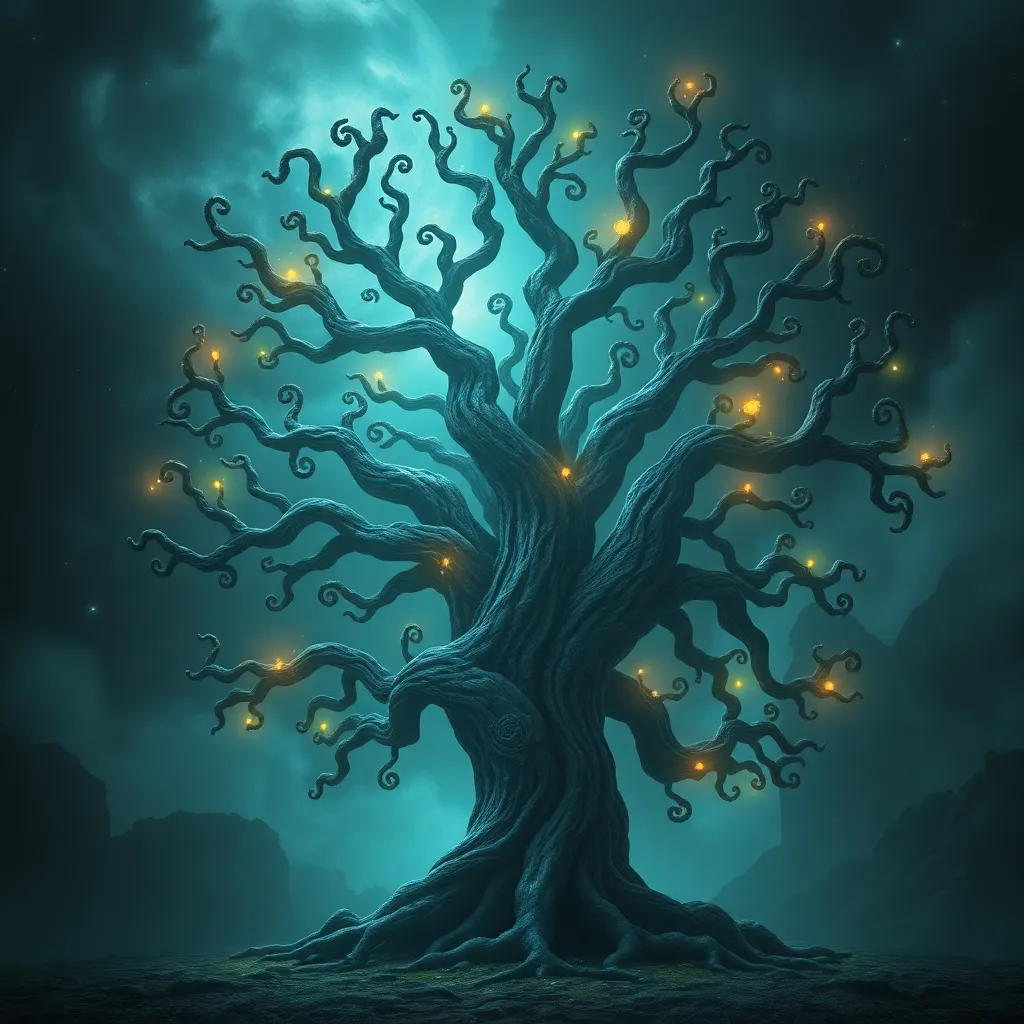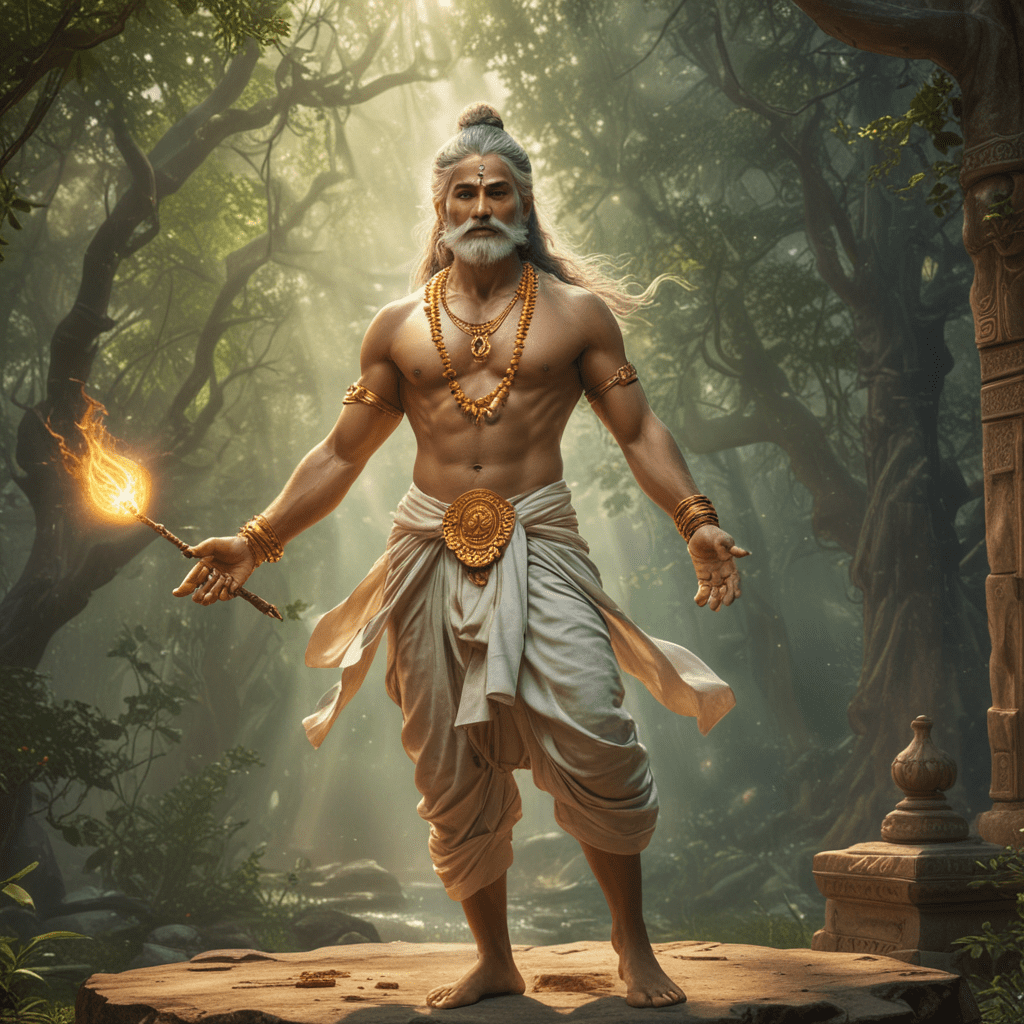The Mountain of the Fabled: Myths of Legendary Creatures
I. Introduction
Legendary creatures have long captivated human imagination, serving as symbols of the unknown and the extraordinary within folklore. These beings, often rooted in cultural narratives, represent more than just fanciful tales; they embody the values, fears, and aspirations of the societies that create them.
Mountains, towering and majestic, have always held a significant place in mythologies around the world. They are often seen as sacred spaces, homes to gods, spirits, and legendary creatures. The purpose of this article is to explore the rich tapestry of myths associated with mountains and the legendary beings that inhabit them, highlighting their cultural significance and the enduring appeal of these narratives.
II. The Cultural Significance of Mountains
Mountains are revered in various cultures for their awe-inspiring presence and perceived connection to the divine. They often serve as:
- Sacred spaces: Many indigenous cultures view mountains as the abodes of spirits and deities.
- Symbolic entities: Mountains represent challenges, aspirations, and the journey of life itself.
- Regional folklore shapers: The geographical features of mountains influence the stories and legends that arise in their proximity.
In many traditions, climbing a mountain can symbolize a spiritual quest or a rite of passage, further enhancing their mythical status.
III. Legendary Creatures of the Himalayas
The Himalayas, the highest mountain range in the world, are steeped in legends and mythical creatures that continue to intrigue adventurers and scholars alike.
A. The Yeti: Origins and sightings
The Yeti, often referred to as the “Abominable Snowman,” is perhaps the most famous legendary creature associated with the Himalayas. Descriptions of the Yeti vary, but it is commonly depicted as a large, hairy humanoid that roams the snowy peaks. The origins of this myth can be traced back to local folklore and ancient texts, with sightings reported by climbers and locals alike.
B. The Naga: Serpent beings of Hindu and Buddhist traditions
In Hindu and Buddhist mythology, Nagas are serpent-like beings that are considered protectors of springs, wells, and rivers, often associated with water and fertility. They are depicted both as benevolent beings and fierce protectors, showcasing the duality present in many mountain myths.
C. Local legends and their impact on culture and tourism
These legendary creatures have significantly impacted local culture and tourism. The allure of the Yeti draws trekkers and adventurers to the region, while sacred sites associated with Nagas attract pilgrims. These myths contribute to the unique cultural landscape of the Himalayas, blending spirituality with adventure.
IV. Creatures of the Andes: The Chupacabra and More
The Andes Mountains are home to a variety of legendary beings that reflect the rich tapestry of Andean folklore.
A. The Chupacabra: Myth or reality?
The Chupacabra, a creature known for its vampiric tendencies towards livestock, first emerged in Puerto Rican folklore but has since spread throughout Latin America. Descriptions vary, but it is often depicted as a small, reptilian creature. The Chupacabra’s origins may be rooted in the anxieties of rural communities facing livestock predation.
B. Other legendary beings from Andean folklore
- El Tio: A spirit associated with the mines, often depicted as a devil-like figure who demands offerings from miners.
- La Llorona: A ghostly figure who weeps for her lost children, embodying themes of loss and mourning in Andean culture.
C. How environmental factors influence these myths
The harsh and majestic landscapes of the Andes shape the myths that arise from them. The isolation and challenges of mountain life contribute to a rich narrative tradition, where the environment becomes a character in its own right.
V. European Mountains and Their Mystical Beasts
European mountains are steeped in a variety of legendary creatures that reflect the diverse cultures of the continent.
A. The dragon in European folklore
Dragons are perhaps the most iconic mythical creatures associated with European mountains. These serpentine beasts often symbolize chaos and destruction but also wisdom and power, depending on the narrative. They are frequently depicted as guardians of treasure, hidden within the depths of caves or atop mountain peaks.
B. The legend of the Tatzelwurm and other Alpine creatures
The Tatzelwurm, a creature with a serpent-like body and a cat-like head, is a famous legend from the Alps. Its appearance in folklore exemplifies how local geography influences the characteristics of mythical beings.
C. Exploring the connection between geography and legend
The rugged terrains of Europe have inspired tales of heroism and adventure, where mountains serve as backdrops for epic encounters with these legendary creatures.
VI. The Role of Indigenous Narratives in Mountain Myths
Indigenous cultures often possess rich narratives about mountains that reflect their deep spiritual connections to these landscapes.
A. Indigenous beliefs about mountain spirits and guardians
Many indigenous peoples believe that mountains are inhabited by spirits or ancestors who act as guardians of the land. These beliefs foster respect for nature and its preservation.
B. Storytelling traditions that preserve these legends
Storytelling is a vital part of many Indigenous cultures, serving to pass down knowledge and cultural values. These narratives often include lessons about the importance of living in harmony with the environment.
C. Contemporary relevance of indigenous myths
As modern societies evolve, the relevance of indigenous myths remains significant, often inspiring movements for environmental conservation and cultural preservation.
VII. The Influence of Literature and Media on Mountain Myths
The portrayal of legendary creatures in literature and media has shaped public perception and popularized mountain myths.
A. Representation of legendary creatures in modern literature
From J.R.R. Tolkien’s dragons to the Yeti in contemporary novels, these creatures continue to inspire authors. Their representation often reflects societal values and fears.
B. Film and television portrayals of mountain myths
Movies and television shows frequently draw upon mountain myths for dramatic storytelling. These portrayals can either reinforce or challenge traditional narratives.
C. The impact of popular culture on public perception of these legends
Popular culture plays a crucial role in shaping how we view these legendary creatures, often blending fantasy with reality in ways that resonate with contemporary audiences.
VIII. Scientific Explanations for Legendary Creatures
While many legendary creatures are steeped in myth, scientific inquiry has sought to provide explanations for their origins.
A. Cryptozoology: The study of hidden animals
Cryptozoology, the study of animals whose existence is not substantiated by mainstream science, often investigates legendary creatures. While many claims are debunked, intriguing possibilities remain.
B. How natural phenomena contribute to legendary stories
Natural phenomena, such as optical illusions or animal behavior, can lead to misidentifications that spawn mythical creatures. For example, the sighting of a large bear could be misinterpreted as a Yeti.
C. Debunking myths with scientific evidence
Scientific advancements continue to debunk many legendary creatures, providing a clearer understanding of the natural world while still honoring the cultural significance of these myths.
IX. The Enduring Appeal of Mountain Myths
Despite advances in science and technology, the allure of mountain myths endures, captivating new generations.
A. Why societies continue to create and believe in these legends
These legends often fulfill a psychological need for wonder and mystery, offering explanations for the unknown and a sense of belonging to a shared cultural heritage.
B. The role of adventure and exploration in myth-making
The spirit of adventure encourages exploration of the unknown, leading to the creation of new myths as individuals encounter the majestic and often treacherous landscapes of mountains.
C. The intersection of reality and fantasy in human culture
Mountain myths illustrate the delicate balance between reality and fantasy, showcasing humanity’s innate desire to explore, imagine, and understand the world around us.
X. Conclusion
Mountains and the mythical



